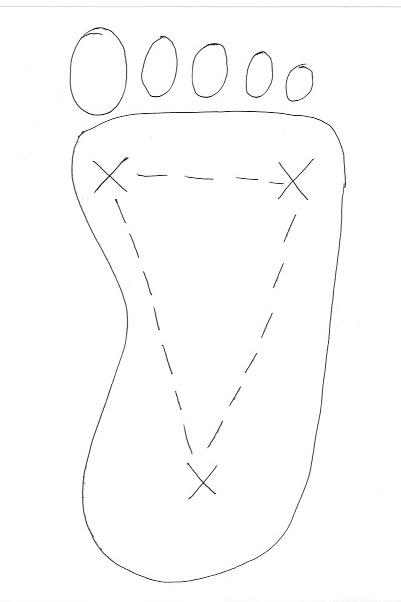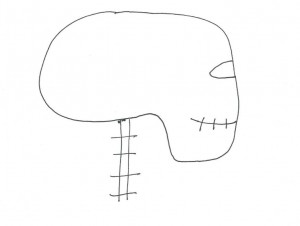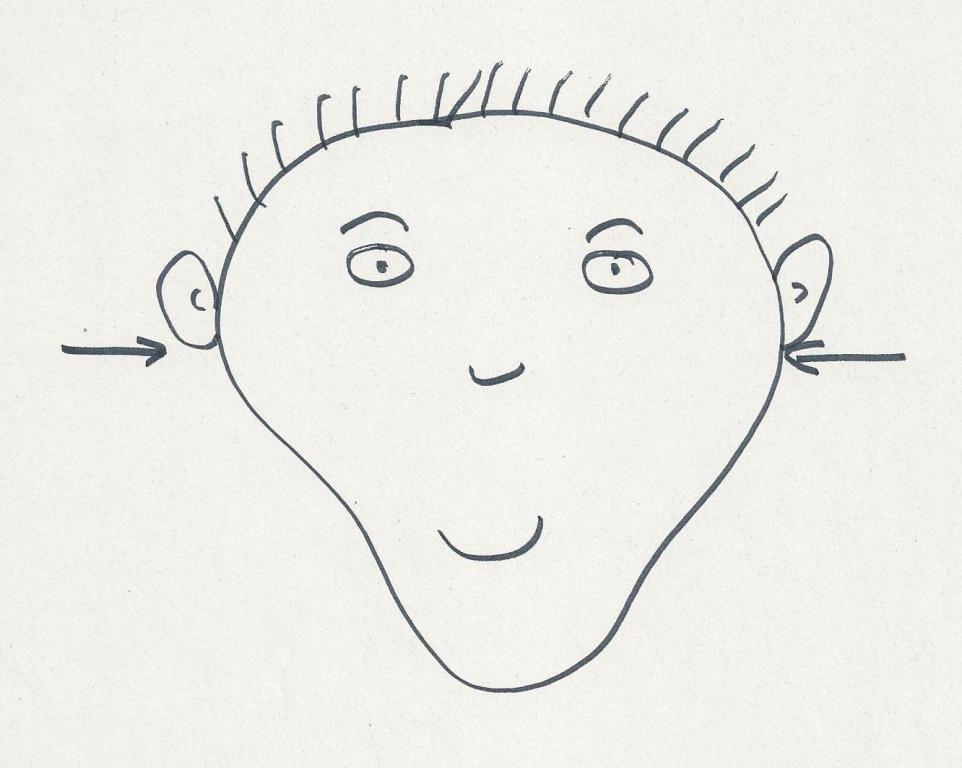
Let’s have a think about the head neck balance. The skull has two dents on its base that sit on the top vertebra. They can be thought of as two rockers that sit in the two cups of the vertebra. The drawing above shows the rocker from the side. The rockers are called occiptal condyles. A condyle is a rounded protruberance. The occiput is the bone at the base of the skull. Latin: ob – against; caput – head.
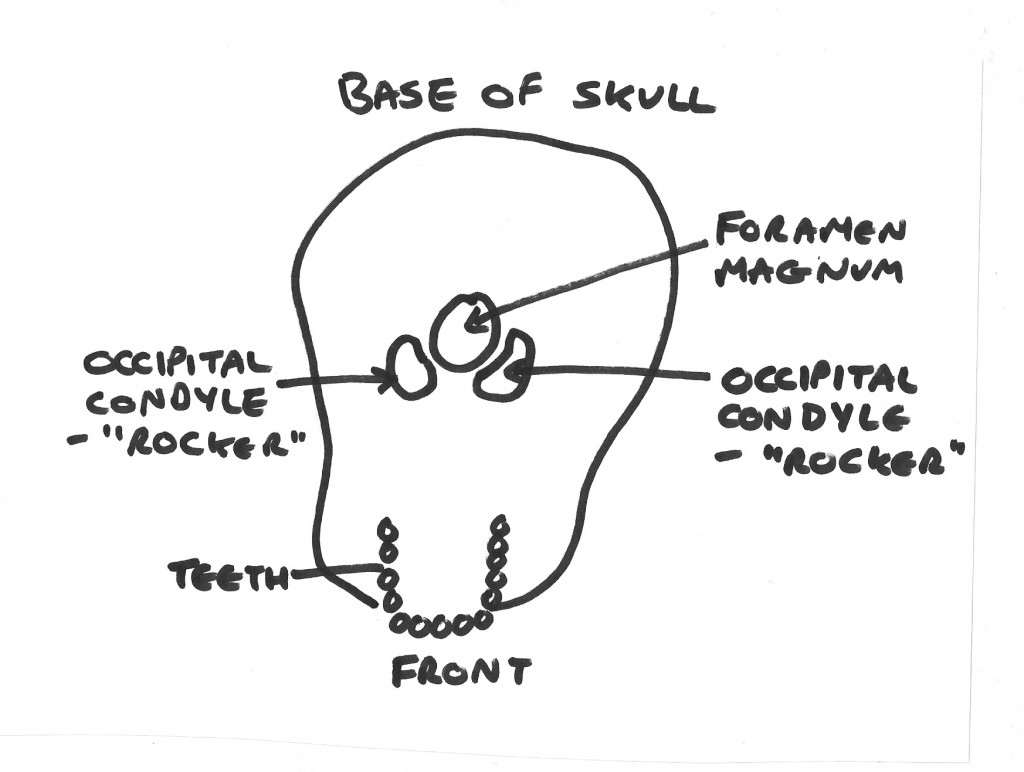
Here, at the base of the skull, we can see where they are situated. They are just in front and a bit to the sides of the foramen magnum (Latin for great hole). This is a hole in the skull through which the spinal cord passes.
Let’s now look at the top vertebra. This is called the atlas. Atlas was a Greek mythological character who is often represented as a human figure bearing the globe on his shoulders.
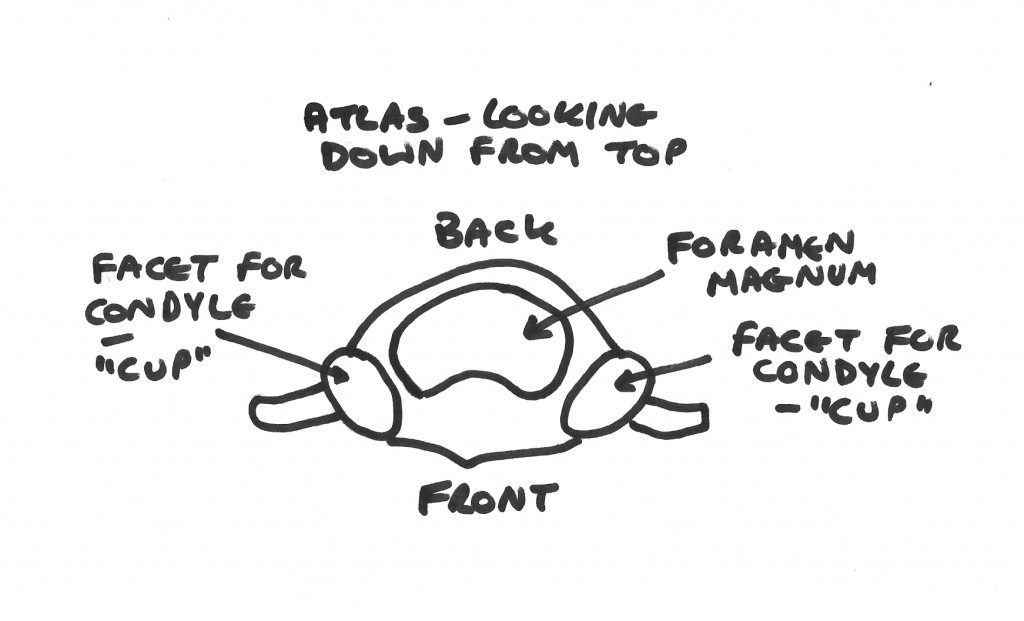
Here we are looking down at the atlas. The foramen magnum is shown in the middle. The ‘cups’ for the rockers are called facets. They are either side of the foramen magnum. The rockers sitting in the cups enable a small nodding movement. It’s a very slight movement. Any bigger nodding movements involve the bones further down the neck.
It can be helpful to think of keeping this head neck joint unlocked. We need the rockers to sit freely in the cups and not to be clamped tightly. It’s important to free up the muscles around the head neck area and we do this through thinking rather than trying to make something happen. One thought to play with is to imagine olive oil lubricating the head neck joint.
This head neck joint, the atlato-occipital joint, is located between the ears. An earlier blog post has one of my drawings showing this. As our heads weigh around 4-5 kg or 10-12 lb, Head Balance – Part 2 explains the importance of not fixing the head-neck joint.



